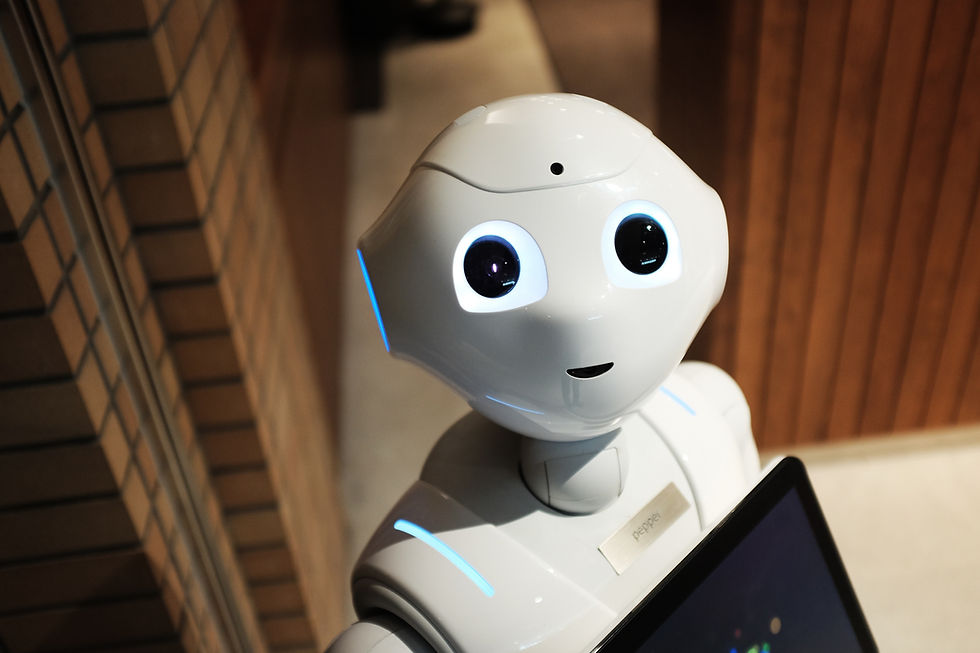English reading practice - Business English - The Human Touch in an AI World (C1/C2 Advanced)
- Karen Hunter
- Feb 14, 2024
- 4 min read
In an era dominated by artificial intelligence and automation, the value of soft skills has never been more pronounced. While technological advancements continue to reshape the employment landscape, the importance of human-centric abilities, often referred to as soft skills, is becoming increasingly evident. Today we delve into the significance of soft skills in an AI world and explore how they contribute to professional success and personal fulfilment.
Soft skills encompass a range of interpersonal, communication, and emotional intelligence abilities that enable individuals to interact effectively with others. Unlike hard or technical skills, which are specific to a particular job or industry, soft skills are transferable and relevant across various domains. Examples include communication, collaboration, adaptability, empathy, and creativity.
The rapid growth of artificial intelligence and automation technologies has sparked concerns about job displacement and the future of work. Routine, rule-based tasks are increasingly being automated, prompting a shift in the skills demanded by the job market. While technical skills remain essential, employers are recognising the importance of soft skills in fostering a resilient and adaptable workforce.
Contrary to the common misconception that AI and soft skills are mutually exclusive, they actually complement each other. AI excels at handling repetitive tasks and processing large volumes of data, while soft skills enable individuals to navigate complex human interactions, understand nuanced emotions, and make decisions in ambiguous situations. The synergy between AI and soft skills creates a powerful combination that propels both personal and professional growth.

One domain where soft skills are irreplaceable is customer service. Despite the rise of chatbots and automated systems, customers still crave authentic, empathetic interactions. Soft skills such as active listening, empathy, and effective communication are pivotal in building trust and creating positive customer experiences. In an AI-driven world, the ability to connect with customers on a personal level becomes a strategic advantage.
In workplaces where diverse teams collaborate, soft skills play a vital role in fostering effective communication and collaboration. The ability to work seamlessly with others, navigate conflict, and contribute to a positive team culture becomes a key differentiator. As AI systems become integrated into various aspects of business operations, the need for individuals with strong interpersonal skills becomes more pronounced.
The rapid pace of technological change requires individuals to be adaptable and open to learning new skills. Soft skills, particularly adaptability and resilience, empower individuals to embrace change, navigate uncertainty, and thrive in dynamic environments. As industries evolve, those with a strong foundation of soft skills are better positioned to reinvent themselves and stay relevant.
In the ever-evolving landscape of the AI world, soft skills emerge as the linchpin for success. While technical skills are crucial, the ability to connect, communicate, and collaborate distinguishes individuals in the workplace. Embracing and honing soft skills not only ensures professional longevity but also contributes to a more fulfilling and enriching human experience amidst the growing influence of artificial intelligence. As we navigate the future of work, the fusion of AI and soft skills promises a harmonious balance that enhances both human potential and technological capabilities.
Check your understanding
How do soft skills differ from technical or hard skills, and why are they considered transferable across various domains?
In what ways do soft skills and artificial intelligence complement each other in the workplace, and how can this synergy contribute to a more effective and efficient work environment?
Why is adaptability highlighted as a crucial soft skill in the context of an AI-driven world, and how does it contribute to an individual's professional success?
Provide examples of how soft skills play a pivotal role in customer service, especially in the face of increasing automation.
In the article, collaboration and team dynamics are discussed as areas where soft skills are essential. Explain how strong interpersonal skills contribute to effective teamwork and why they are increasingly valued in diverse work environments influenced by AI.
You can now listen to this article as a podcast just click here
If you find this practice useful please consider supporting the author from just £1 per month here
Vocabulary
Interpersonal Skills: These are the abilities that individuals use to interact with others effectively. They include communication, empathy, active listening, and collaboration.
Transferable Skills: Skills that can be applied and used across various jobs and industries. Soft skills are often described as transferable because they can be valuable in different professional settings.
Linchpin: In a metaphorical sense, a linchpin refers to something that holds various elements together or serves as a critical and indispensable component.
Nuanced: Refers to the subtle and detailed aspects of something, often involving a deep understanding of complexities or distinctions.
Synergy: The interaction or cooperation of two or more elements to produce a combined effect greater than the sum of their separate effects.
Pivotal: Of crucial importance or significance, suggesting that a particular element plays a key role in a situation or outcome.
Harmonious: Refers to a state of agreement, balance, or compatibility between different elements, creating a pleasing and cohesive whole.
Leverage: In this context, it means using an advantage or resource to achieve a desired outcome.




Comments